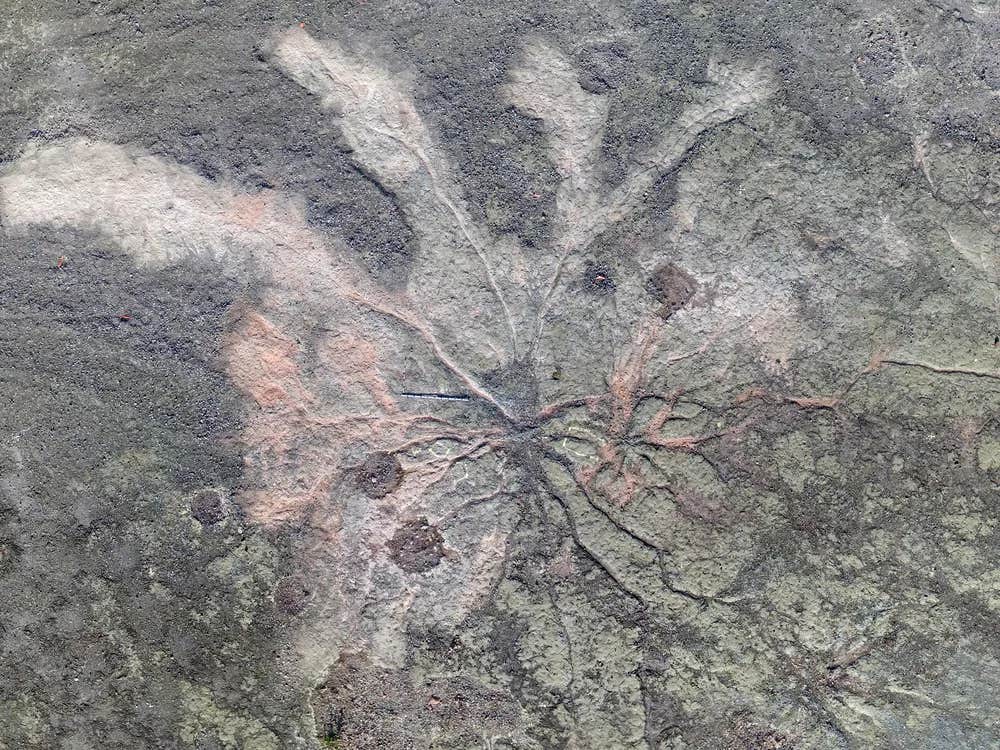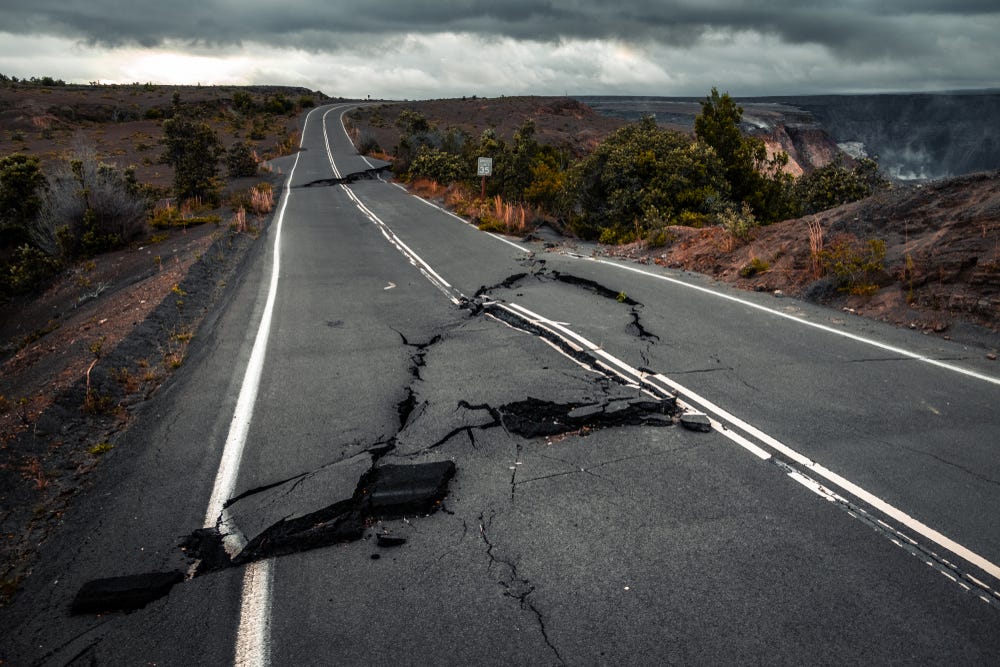Paleobotanists discover the world’s oldest forest dating back 385 million years
Over years of detailed study, researchers have pieced together the remnants of this ancient forest ecosystem.

An aerial view of a fossil of Archaeopteris, a 385-million-year-old tree with surprisingly modern-looking roots. (CREDIT: William Stein and Christopher Berry)
In 2009, Charles Ver Straeten, curator of sedimentary rocks at the New York State Museum, made an unexpected discovery while surveying an old quarry. He was exploring the site with colleagues Linda Van Aller Hernick and Frank Mannolini, scouting for a potential field trip when something unusual in the stone caught his attention.
Paleobotanists had examined the former highway department property since the 1960s, but Ver Straeten’s trained eye noticed something different. Etched into the rock were wandering grooves, features typically found in marine environments. Yet, even during the Middle Devonian period, this land had never been covered by an ocean.
Intrigued, Ver Straeten traced eleven of these sinuous lines. They all led back to a single point, revealing their true nature—fossilized roots of an ancient tree. This discovery was not just significant; it was groundbreaking. These roots belonged to one of the oldest known trees on Earth, from a time when forests were just beginning to shape the planet’s landscapes.
Over years of detailed study, researchers have pieced together the remnants of this ancient ecosystem. What they uncovered was extraordinary—the world’s oldest known forest, predating the famous Gilboa fossil forest by two million years. Each tree imprint preserved in the rock tells a story of early plant life’s transformation into structured woodlands.
The site, located in Cairo, New York, has remained under careful watch. Researchers from Binghamton University and beyond have worked to protect it from fossil hunters and accidental damage. However, long-term preservation has remained a concern. Without formal safeguards, exposure to weather and human activity threatened this irreplaceable record of Earth’s history.
Recently, thanks to efforts led by New York State Senator Michelle Hinchey, the town of Cairo received a $170,000 grant to strengthen protection measures. The funding will support the construction of specialized fencing reinforced with concrete barriers, ensuring the delicate fossilized roots remain undisturbed.
Joe Hasenkopf, chair of the Cairo Planning Board, emphasized that securing the site is just the beginning. Next, officials will conduct a feasibility study to explore the possibility of an on-site educational center and working laboratory. This initiative could provide researchers, students, and the public with hands-on access to one of the planet’s most ancient forest remnants.
In a promising development, New York State has passed legislation to create a geological trail and geopark system, with Cairo expected to be one of its first designated sites. This recognition could open the door to additional funding and long-term preservation efforts, ensuring that future scientists and visitors can continue unraveling the secrets of this ancient forest for generations to come.
Related Stories
Khudadad, who earned a doctorate in biological sciences from Binghamton University, emphasized the significance of this preservation. “The in-situ preserved forest floors such as the one in the Town of Cairo are the rarest fossil records. Its preservation is a great contribution to the study of the evolution of early trees, forest ecosystems, past climates and landscapes, and possibly the earliest land animals,” he explained. “There are plenty of unanswered questions that need to be investigated by current and future scientists, and such preservation attempts are definitely a great gift to future generations.”
Stein elaborated on the importance of these sites, noting that the Cairo and Gilboa locations, along with Conesville, which is somewhat younger, likely represent different aspects of the same forest that persisted for millions of years in the Catskill region. “These sites together currently record the best evidence worldwide of forests during this time period,” Stein said.
The Gilboa site was first called the “world’s oldest forest” in the 1920s, thanks to the New York State Museum’s Winifred Goldring. However, the Cairo site, at 387 million years old, is slightly older than Gilboa. Both sites are unique in preserving the root systems of individual trees within ancient soil. These root structures, akin to dinosaur footprints, offer scientists a glimpse into the behavior of living organisms—specifically, ancient forest ecology.
Since the 1920s, knowledge about these ancient forests has advanced. Researchers now have a better understanding of the composition and structure of these forests and their impact on global processes such as climate, river geometry, and nutrient cycling during the Devonian Period. However, debates continue about what constitutes the “oldest” forest and the definitions of “tree” and “forest.”
Devonian forests were not like the ones you see in New York state today. At that time, the state was located south of the equator and was much warmer. The young Appalachian Mountains were still growing, feeding rivers that drained into a shallow sea now known as the Appalachian basin.
During this period, most landscapes around rivers were barren, as the planet’s land surface was just beginning to green. Forests were fragile; if a river changed course and destroyed a forest, it didn’t regenerate. Trees reproduced by microscopic spores, as seeds had not yet developed.
Early trees came in three types: Eospermatopteris, which resembled a palm tree; lycopsid trees, related to modern club mosses and horsetails; and the conifer-like Archaeopteris. While some young forests were dominated by a single type of tree, all three could grow together in complex forests located in river floodplains.
These ancient trees and soils, transformed by tree roots, played a critical role in drawing down carbon dioxide from the atmosphere, contributing to the global cooling observed during the Paleozoic era. Known as paleosols, these ancient soils record not only the history of primitive trees but also past climate changes.
Through the creation of green corridors, ancient forests like those in the Catskills helped facilitate the transition of fish into tetrapods, leading to the evolution of dinosaurs and other land animals.
There’s still much to learn about the ancient Catskills and the time when the first forests spread across the landscape, cooling the climate. These lessons could even provide insights into our future under climate change.
“It is no exaggeration to say that event was unique in Earth’s history and of highest importance to understanding how Earth’s systems interconnect,” Stein noted. “Devonian ‘afforestation’ is essentially the same process but in reverse to what’s happening today: deforestation, burning fossil fuels, with related increase in climate mean temperature.”
Note: Materials provided above by The Brighter Side of News. Content may be edited for style and length.
Like these kind of feel good stories? Get The Brighter Side of News' newsletter.



